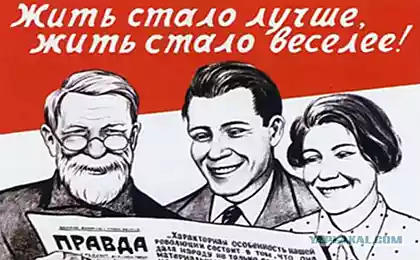1054
Internet memes and trends, which, it turns out, for hundreds of years
1. Victorian funny kote
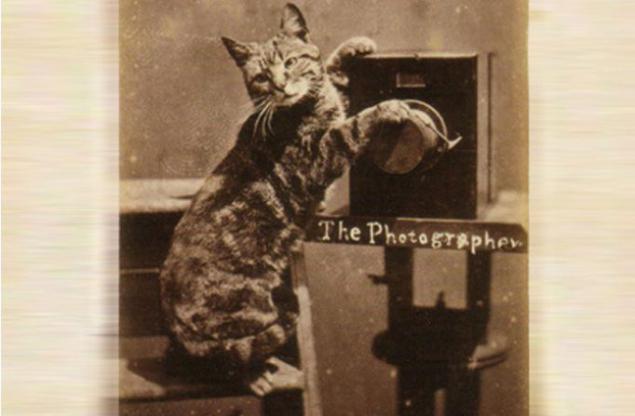
Photographing a cat in ridiculous outfits and accommodation funny captions on them goes back to the Victorian era, namely the studios of Harry and Harry Pointer Vries. These pictures separately took pictures of cats in poses similar to human, and sold them for greeting cards and children's books. It was hard work, because the photos were primitive equipment and cats should have stayed in the ideal position for a long time.
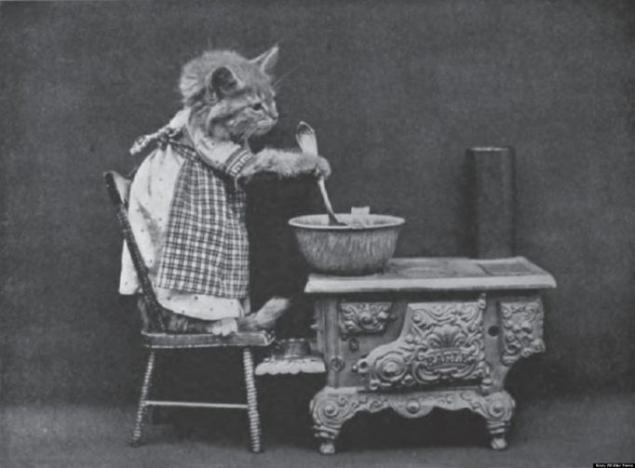
One of their contemporaries, taxidermist Walter Potter, had no such difficulties. Throughout his career, Potter gave stuffed dead small animals - rats, cats and rabbits - human posture.
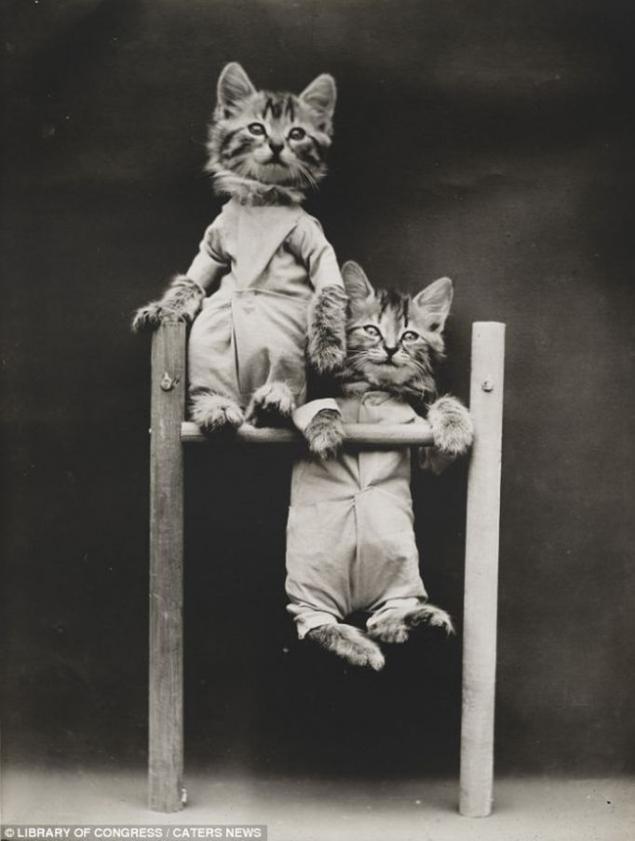
However, their country work can not be compared to the masterpieces of the artist Louis Wayne. It is reported that throughout his life Wayne suffered from schizophrenia - this can be explained by the fact that he did not draw nearly anything but anthropomorphic cats.

2. Lolspik appeared in the 1830s
In lolspika, language of the Internet age, has its predecessor in the form of funny acronyms. This trend first appeared in newspapers in the 1830s - 1840s in Boston and spread to other publications across the United States. Funny acronyms replaced by the words, which are also deliberately made mistakes (such as "Okay, thanks, bye" into a "lanpasibpoka"). Instead, a good fun newspaper used these reductions, mainly to make fun of poor people and their ignorance.
However, this trend has given mankind one of the most well-known and understandable abbreviations - OK. Although there have been many attempts to explain its exact origin, most likely I gave etymologist Dr. Allen Walker Read. In 1963 he was writing in the journal "American speech," he explained that this reduction is probably derived from the misspelled phrase «oll correct», that Russian can be translated as "FSE right».
3. Our ancient ancestors were trolls (and moderators, fortunately)

Imagine a typical keyboard warrior, sitting comfortably in a chair, but speaking as an action hero. This is exactly what at one time did the ancient Greeks and Romans, moreover, they scratch out their messages on the wall and pretty much any surface, which could find. Along with the current thrash appeared regular reports about the sexual exploits of an individual (and his lack of an opponent), although many of the messages were on serious topics such as love and philosophy.
In addition to trolling and flood the evidence points to the fact that these messages carefully adjusted, especially on the walls of the houses of the rich. Just as moderators owner to control which messages can be left on its wall. This setting gave him leverage over political candidates, who loved to write on the walls of the rich, but had to ask for permission first before you leave messages on their campaigns.
4. Viral letter doomsday

Doomsday predictions have appeared in large numbers in different civilizations and different times. Letter from Toledo, however, was the first documented case of a panic because of the end of the world is indeed becoming viral.
The letter, which spread through Europe in 1184, the year and allegedly written by monks, predicts that the apocalypse will happen in 1186, the year, and this event was preceded by a sinister parade of planets "in Libra and the tail of the dragon." After that they were to begin natural disasters, and the only salvation for the people were fleeing to the mountains.
The letter caused a mass panic in the continent, and even the Archbishop of Canterbury has announced a 72-hour fast, to prevent the end of the world. Although planets lined up in a straight line, as predicted, disaster not occurred. However, we know perfectly well that one unsuccessful doomsday predictions will not stop the spread of many others.
5. The first flash mob took place in the Tasmanian penal colony

Doomsday predictions have appeared in large numbers in different civilizations and different times. Letter from Toledo, however, was the first documented case of a panic because of the end of the world is indeed becoming viral.
The letter, which spread through Europe in 1184, the year and allegedly written by monks, predicts that the apocalypse will happen in 1186, the year, and this event was preceded by a sinister parade of planets "in Libra and the tail of the dragon." After that they were to begin natural disasters, and the only salvation for the people were fleeing to the mountains.
The letter caused a mass panic in the continent, and even the Archbishop of Canterbury has announced a 72-hour fast, to prevent the end of the world. Although planets lined up in a straight line, as predicted, disaster not occurred. However, we know perfectly well that one unsuccessful doomsday predictions will not stop the spread of many others.
5. The first flash mob took place in the Tasmanian penal colony
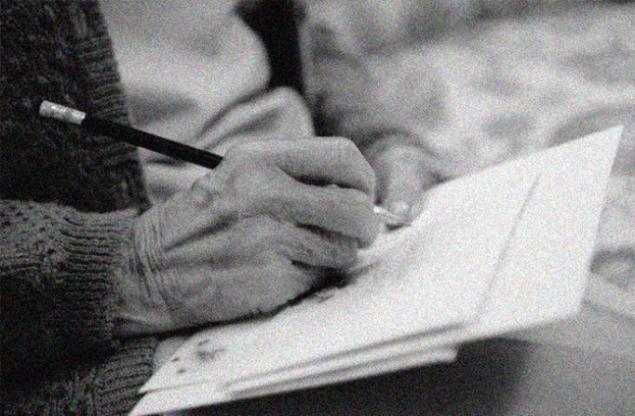
Anyone who has an email account or social network, be sure to get a "chain letter". Far from being a child of the Internet age, this annoying trend appeared in XIX-th century. The first known example of such a letter was a letter signed "Mrs. George A. Aman" of Sherwood, Tennessee. The letter appealed to the good people to donate 10 cents, so that she could pay for education of children of poor whites in Appalachia.
The letter included its address and instructions to the recipient of his duplicated and sent four more people. In contrast to the current "chain letters," in a letter to the promised blessings to the recipient, follow the instructions, and not a curse to those who ignore it. Using the threat has become more common only since the Great Depression.
7. Self began with the medieval love of mirrors
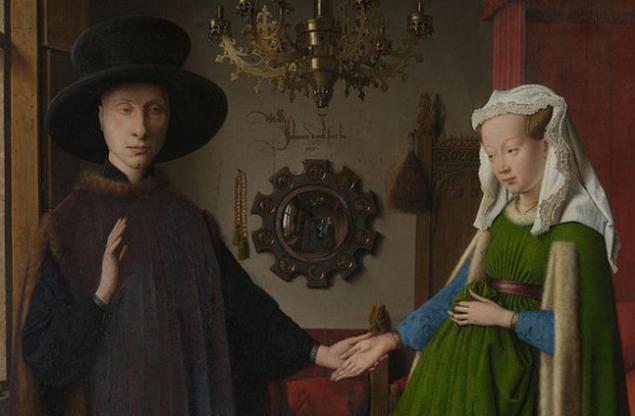
We may think that infinite human obsession with photographing themselves started with the digital age, and reflects a new level of narcissism. However, according to one researcher, the art of making images of self can be associated with enthusiasm mirrors that struck the Middle Ages.
Art historian James Hall said that people's fascination mirrors appeared after the self-portraits of artists began to write, since the XII-th century. The only difference is that these portraits were in fact a means of self-reflection, conform to Christian doctrine of the time, not just one more way to attract attention.
Hall refers to "Arnolfini Portrait" by Jan van Eyck, and argues that the mirror in the picture is a guide to how to learn better themselves. These self-portraits allow a better view of the characters and criticize their internal quality. Fashion for such self-portraits gradually damped to the XX century, and this has led to the current shallow self.
8. People wearing Guy Fawkes mask in the XVIII-th century

Made famous by rocking soul of comics and movie «V - for Vendetta" and its subsequent use for the protest activist groups around the world, the predecessor of the cult masks of Guy Fawkes was created shortly after the execution of his namesake after the failure of the Gunpowder Plot in 1605, the year. Every year on November 5 - the anniversary of the unsuccessful revolt - people in Britain carried out "Guy Fawkes Night" by burning an effigy with a person like him.
Later, in the XVIII-th century, people actually wore Guy Fawkes masks. While the children were rude version mask when begging in the street. Some went further and in this case of a black face and wore an old black clothes. To complete the image, they chanted the slogan "Remember November 5!».
9. Modern (crazy) fandom began with "Sherlock Kholmsk" Conan Doyle
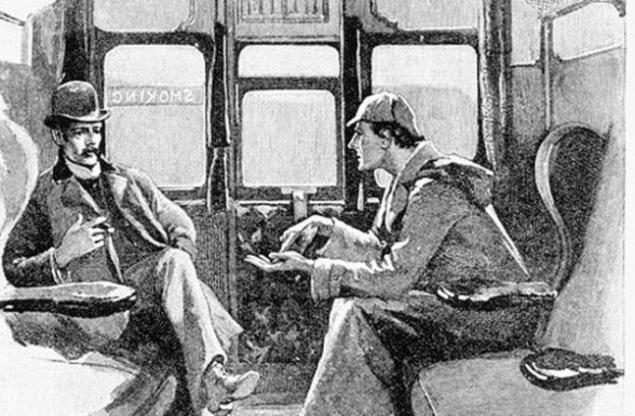
Lack of internet did not save the crazy fans and fans XIX-th century of suffering for their idol, which then turned out to be Sherlock Holmes. Faithful followers of the great Victorian detective began initiators of modern fandom.
These fans were just as obsessive as their modern counterparts. So when Conan Doyle, who do not really care about Holmes, killed him in a fight with Professor Moriarty, fans were outraged. Many in protest against his death wore black armbands, and one woman even reportedly struck Doyle umbrella.
The protests came to America, where fans were asked to "leave Holmes alive." Irritable Doyle relented and wrote a new story in which Holmes survived the confrontation to a joyful jubilation of fans around the world.
--img13--
Source: www.publy.ru

Photographing a cat in ridiculous outfits and accommodation funny captions on them goes back to the Victorian era, namely the studios of Harry and Harry Pointer Vries. These pictures separately took pictures of cats in poses similar to human, and sold them for greeting cards and children's books. It was hard work, because the photos were primitive equipment and cats should have stayed in the ideal position for a long time.

One of their contemporaries, taxidermist Walter Potter, had no such difficulties. Throughout his career, Potter gave stuffed dead small animals - rats, cats and rabbits - human posture.

However, their country work can not be compared to the masterpieces of the artist Louis Wayne. It is reported that throughout his life Wayne suffered from schizophrenia - this can be explained by the fact that he did not draw nearly anything but anthropomorphic cats.

2. Lolspik appeared in the 1830s
In lolspika, language of the Internet age, has its predecessor in the form of funny acronyms. This trend first appeared in newspapers in the 1830s - 1840s in Boston and spread to other publications across the United States. Funny acronyms replaced by the words, which are also deliberately made mistakes (such as "Okay, thanks, bye" into a "lanpasibpoka"). Instead, a good fun newspaper used these reductions, mainly to make fun of poor people and their ignorance.
However, this trend has given mankind one of the most well-known and understandable abbreviations - OK. Although there have been many attempts to explain its exact origin, most likely I gave etymologist Dr. Allen Walker Read. In 1963 he was writing in the journal "American speech," he explained that this reduction is probably derived from the misspelled phrase «oll correct», that Russian can be translated as "FSE right».
3. Our ancient ancestors were trolls (and moderators, fortunately)

Imagine a typical keyboard warrior, sitting comfortably in a chair, but speaking as an action hero. This is exactly what at one time did the ancient Greeks and Romans, moreover, they scratch out their messages on the wall and pretty much any surface, which could find. Along with the current thrash appeared regular reports about the sexual exploits of an individual (and his lack of an opponent), although many of the messages were on serious topics such as love and philosophy.
In addition to trolling and flood the evidence points to the fact that these messages carefully adjusted, especially on the walls of the houses of the rich. Just as moderators owner to control which messages can be left on its wall. This setting gave him leverage over political candidates, who loved to write on the walls of the rich, but had to ask for permission first before you leave messages on their campaigns.
4. Viral letter doomsday

Doomsday predictions have appeared in large numbers in different civilizations and different times. Letter from Toledo, however, was the first documented case of a panic because of the end of the world is indeed becoming viral.
The letter, which spread through Europe in 1184, the year and allegedly written by monks, predicts that the apocalypse will happen in 1186, the year, and this event was preceded by a sinister parade of planets "in Libra and the tail of the dragon." After that they were to begin natural disasters, and the only salvation for the people were fleeing to the mountains.
The letter caused a mass panic in the continent, and even the Archbishop of Canterbury has announced a 72-hour fast, to prevent the end of the world. Although planets lined up in a straight line, as predicted, disaster not occurred. However, we know perfectly well that one unsuccessful doomsday predictions will not stop the spread of many others.
5. The first flash mob took place in the Tasmanian penal colony

Doomsday predictions have appeared in large numbers in different civilizations and different times. Letter from Toledo, however, was the first documented case of a panic because of the end of the world is indeed becoming viral.
The letter, which spread through Europe in 1184, the year and allegedly written by monks, predicts that the apocalypse will happen in 1186, the year, and this event was preceded by a sinister parade of planets "in Libra and the tail of the dragon." After that they were to begin natural disasters, and the only salvation for the people were fleeing to the mountains.
The letter caused a mass panic in the continent, and even the Archbishop of Canterbury has announced a 72-hour fast, to prevent the end of the world. Although planets lined up in a straight line, as predicted, disaster not occurred. However, we know perfectly well that one unsuccessful doomsday predictions will not stop the spread of many others.
5. The first flash mob took place in the Tasmanian penal colony

Anyone who has an email account or social network, be sure to get a "chain letter". Far from being a child of the Internet age, this annoying trend appeared in XIX-th century. The first known example of such a letter was a letter signed "Mrs. George A. Aman" of Sherwood, Tennessee. The letter appealed to the good people to donate 10 cents, so that she could pay for education of children of poor whites in Appalachia.
The letter included its address and instructions to the recipient of his duplicated and sent four more people. In contrast to the current "chain letters," in a letter to the promised blessings to the recipient, follow the instructions, and not a curse to those who ignore it. Using the threat has become more common only since the Great Depression.
7. Self began with the medieval love of mirrors

We may think that infinite human obsession with photographing themselves started with the digital age, and reflects a new level of narcissism. However, according to one researcher, the art of making images of self can be associated with enthusiasm mirrors that struck the Middle Ages.
Art historian James Hall said that people's fascination mirrors appeared after the self-portraits of artists began to write, since the XII-th century. The only difference is that these portraits were in fact a means of self-reflection, conform to Christian doctrine of the time, not just one more way to attract attention.
Hall refers to "Arnolfini Portrait" by Jan van Eyck, and argues that the mirror in the picture is a guide to how to learn better themselves. These self-portraits allow a better view of the characters and criticize their internal quality. Fashion for such self-portraits gradually damped to the XX century, and this has led to the current shallow self.
8. People wearing Guy Fawkes mask in the XVIII-th century

Made famous by rocking soul of comics and movie «V - for Vendetta" and its subsequent use for the protest activist groups around the world, the predecessor of the cult masks of Guy Fawkes was created shortly after the execution of his namesake after the failure of the Gunpowder Plot in 1605, the year. Every year on November 5 - the anniversary of the unsuccessful revolt - people in Britain carried out "Guy Fawkes Night" by burning an effigy with a person like him.
Later, in the XVIII-th century, people actually wore Guy Fawkes masks. While the children were rude version mask when begging in the street. Some went further and in this case of a black face and wore an old black clothes. To complete the image, they chanted the slogan "Remember November 5!».
9. Modern (crazy) fandom began with "Sherlock Kholmsk" Conan Doyle

Lack of internet did not save the crazy fans and fans XIX-th century of suffering for their idol, which then turned out to be Sherlock Holmes. Faithful followers of the great Victorian detective began initiators of modern fandom.
These fans were just as obsessive as their modern counterparts. So when Conan Doyle, who do not really care about Holmes, killed him in a fight with Professor Moriarty, fans were outraged. Many in protest against his death wore black armbands, and one woman even reportedly struck Doyle umbrella.
The protests came to America, where fans were asked to "leave Holmes alive." Irritable Doyle relented and wrote a new story in which Holmes survived the confrontation to a joyful jubilation of fans around the world.
--img13--
Source: www.publy.ru
Flower Superjet English kingdom!
In the Krasnoyarsk region at the expense of the student, saved drowning girls









